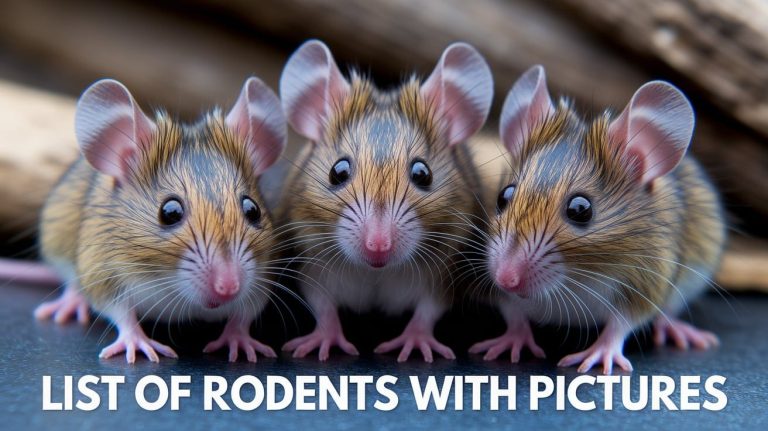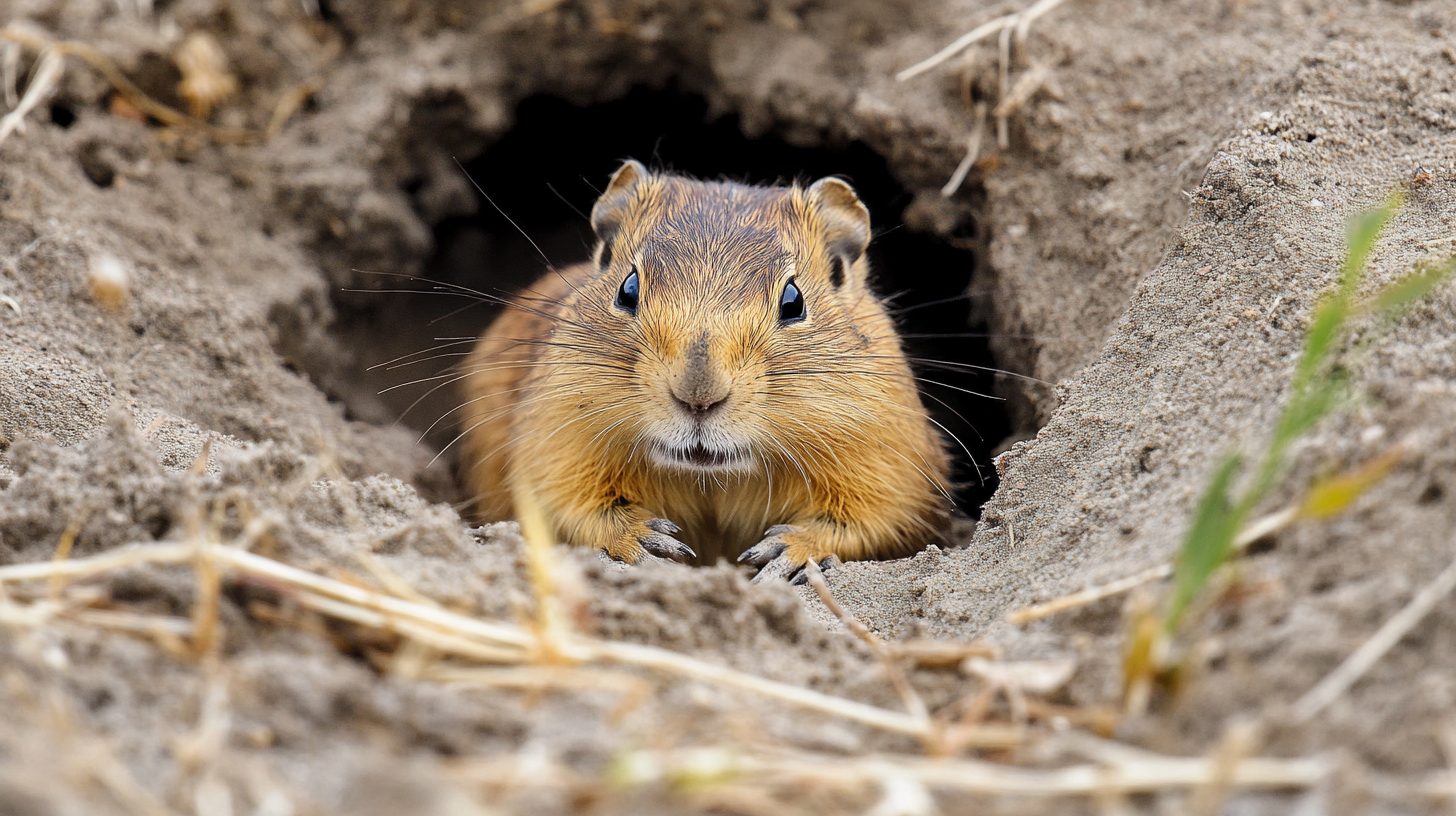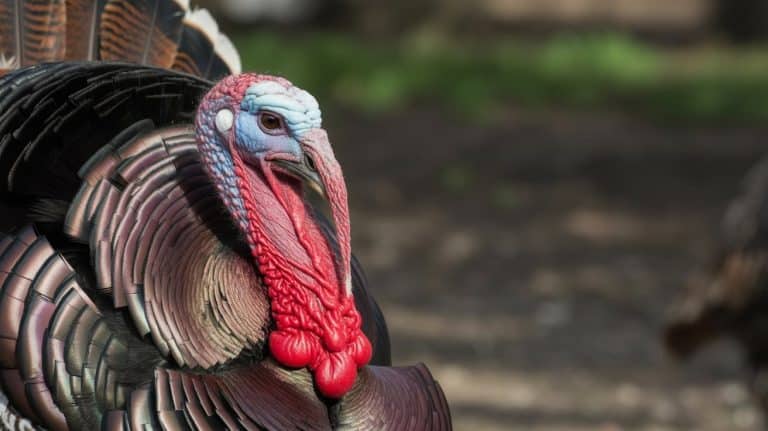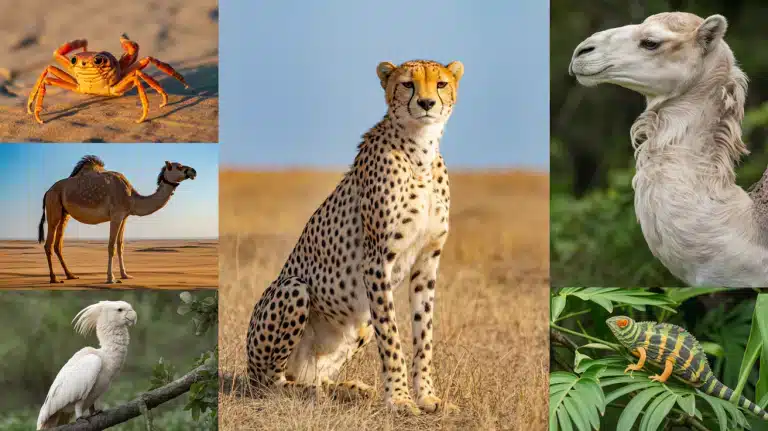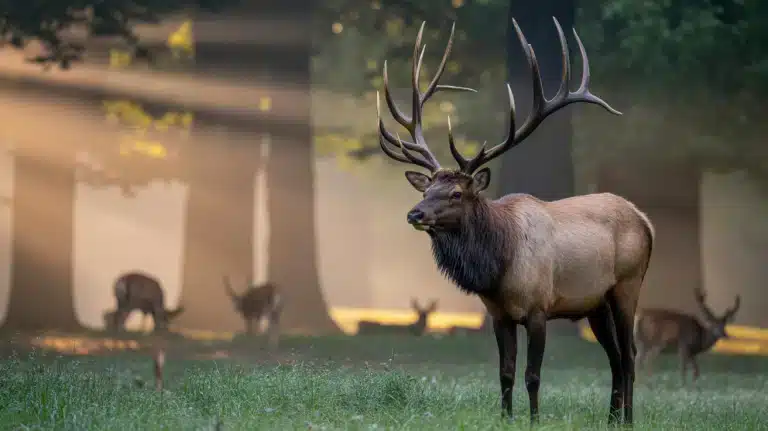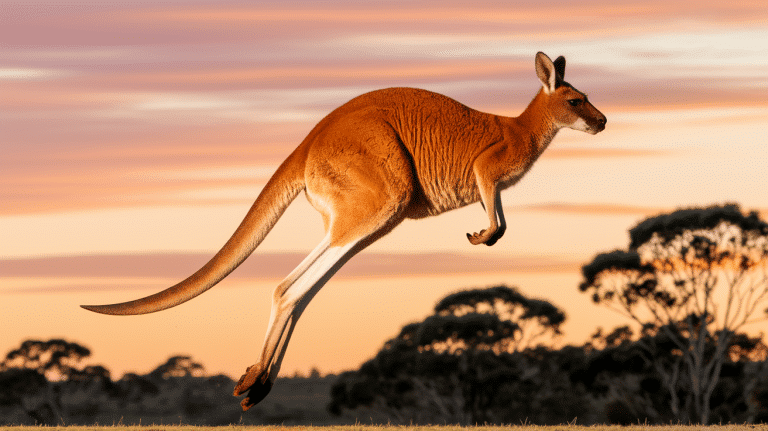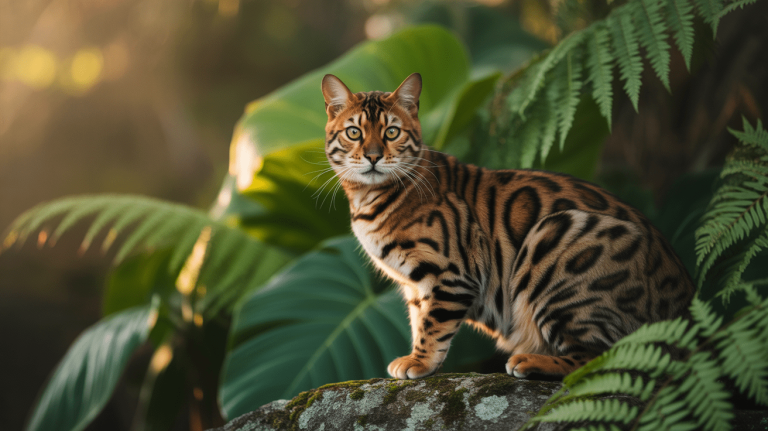Rodents are small mammals that live almost everywhere on Earth.
They come in many sizes – from tiny mice to huge capybaras. These animals have special front teeth that keep growing, which helps them chew through different materials.
Rodents survive in tough places like hot deserts and cold Arctic regions.
Some dig underground, some climb trees, and some swim in rivers. They live in big groups or alone, depending on the type.
This guide will show you a list of rodents with pictures, how rodents work, where they live, and why they matter in nature.
Learn about their different types, habits, and the cool ways they survive in the world around us. From the forests to farmlands, these small creatures play big roles in keeping our ecosystems balanced and healthy.
Characteristics Of Rodents
Rodents have several defining characteristics that distinguish them from other mammals:
- Incisors: Rodents have a pair of large, sharp, continuously growing incisors in both the upper and lower jaws. These teeth are used for gnawing and must be kept worn down through regular use.
- Gnawing Habits: Due to their ever-growing teeth, rodents are known for gnawing on a variety of materials, such as wood, plants, and sometimes even metal, to help wear down their teeth.
- Small Size: Most rodents are small, though some species, like beavers and capybaras, are exceptions. Their size helps them adapt to various environments.
- Social Behavior: Many rodents are social animals, living in groups or colonies. They communicate through vocalizations, scent-marking, and body language.
- Highly Reproductive: Rodents typically have high reproductive rates, with many species giving birth to large litters multiple times a year.
- Varied Diet: While many rodents are herbivores, feeding on seeds, fruits, and plants, others may be omnivores, consuming small insects and other animals in addition to plants.
- Strong Burrowing Abilities: Many rodents, such as mice, voles, and gophers, are skilled burrowers, creating complex tunnel systems for shelter, food storage, and protection from predators.
- Adaptability: Rodents are highly adaptable and can live in a variety of environments, from forests and deserts to urban areas, making them one of the most successful groups of mammals.
Suborders of Rodents
Rodents are classified into four major suborders, each containing different families and species. They include:
- Hystricognath Rodents
- Myomorpha (Mouse-like rodents)
- Sciuromorpha (Squirrel-like rodents)
- Anomaluromorpha (Scaly-tailed squirrels)
Let’s get into the details of each suborder:
Hystricognath Rodents
This suborder includes large, herbivorous rodents like porcupines, guinea pigs, capybaras, and chinchillas.
These rodents typically have specialized features such as quills for defense and adaptations for a vegetarian diet.
1. Porcupines
Porcupines are nocturnal rodents found in North and South America, Africa, and parts of Asia.
They are best known for their sharp, barbed quills, which they use as a defense mechanism.
Contrary to popular belief, porcupines cannot shoot their quills; they detach easily when touched and are difficult to remove once embedded in a predator’s skin.
These animals are also skilled climbers and can be found in trees, where they feed on bark, leaves, and branches.
| Scientific Name | Average Size | Weight | Predators | Lifespan |
|---|---|---|---|---|
| Erethizon dorsatum | 60-90 cm (2-3 ft) | 5-14 kg (11-30 lbs) | Mountain lions, coyotes, bobcats, and humans | 5-10 years (in the wild) |
2. Hyraxes
Hyraxes, also known as rock rabbits, are small mammals found mainly in Africa and the Middle East.
Despite their resemblance to guinea pigs, they are more closely related to elephants and manatees. Hyraxes live in rocky, mountainous areas where they seek shelter in crevices and cliffs.
They are highly social animals, often found in groups that help protect each other from predators.
Hyraxes communicate through a variety of vocalizations, including alarm calls when they sense danger.
| Scientific Name | Average Size | Weight | Predators | Lifespan |
|---|---|---|---|---|
| Procavia capensis | 40-50 cm (1.3-1.6 ft) | 2-5 kg (4-11 lbs) | Eagles, jackals, leopards | 10-14 years (in the wild) |
3. Cavies (Guinea pigs)
Cavies, commonly known as guinea pigs, are small, social rodents native to the Andes mountains in South America. They are herbivores, feeding primarily on grass, hay, and vegetables.
Guinea pigs are highly social and thrive in groups, often forming strong bonds with other cavies.
Unlike many other rodents, they cannot produce vitamin C on their own, so they require a diet rich in this nutrient to stay healthy.
They communicate through a variety of vocalizations, including chirps, squeals, and purrs.
| Scientific Name | Average Size | Weight | Predators | Lifespan |
|---|---|---|---|---|
| Cavia porcellus | 25-30 cm (10-12 in) | 0.7-1.2 kg (1.5-2.6 lbs) | Birds of prey, foxes, wild cats | 4-6 years (domestic) |
4. Capybaras
Capybaras are the largest rodents in the world, native to South America. These gentle, semi-aquatic creatures are often found in wetlands, grasslands, and near rivers.
Capybaras are social animals, living in large groups that can number up to 100 individuals.
Capybaras are excellent swimmers, using their webbed feet to move swiftly in water.
They have a calm and friendly demeanor, often interacting peacefully with other animals, including birds and smaller mammals.
| Scientific Name | Average Size | Weight | Predators | Lifespan |
|---|---|---|---|---|
| Hydrochoerus hydrochaeris | 100-130 cm (3.3-4.3 ft) | 35-66 kg (77-146 lbs) | Jaguars, caimans, anacondas | 6-12 years (in the wild) |
5. Chinchillas
Chinchillas are small, nocturnal rodents native to the Andes Mountains in South America. They are best known for their incredibly soft fur, which is much denser than that of any other land mammal.
Chinchillas are social animals, often living in groups in the wild, and they thrive in a cool, dry environment due to their thick fur.
In the wild, they are found in rocky, mountainous areas, where they forage for plants, seeds, and fruits.
As pets, chinchillas require careful care, including regular dust baths to keep their fur clean.
| Scientific Name | Average Size | Weight | Predators | Lifespan |
|---|---|---|---|---|
| Chinchilla lanigera | 25-35 cm (9.8-13.8 in) | 0.4-0.8 kg (0.9-1.8 lbs) | Eagles, wild cats | 10-20 years (in captivity) |
Myomorpha (Mouse-like rodents)
Comprising small, agile rodents such as mice, rats, gerbils, and hamsters.
Myomorpha are known for their sharp incisors and highly adaptable behaviors that allow them to thrive in various environments.
6. Mice
Mice are small, agile rodents found in a variety of habitats around the world, from forests to urban areas.
Known for their quick movements and ability to squeeze through tiny openings, they are highly adaptable and resilient.
Mice are often nocturnal and live in complex burrow systems or nests made of materials they gather.
Mice play an important role in ecosystems, serving as prey for numerous predators and helping to control insect populations.
| Scientific Name | Average Size | Weight | Predators | Lifespan |
|---|---|---|---|---|
| Mus musculus | 7.5-10 cm (3-4 in) | 20-40 g (0.7-1.4 oz) | Snakes, owls, hawks | 1-2 years (in the wild) |
7. Rats
Rats are intelligent and adaptable rodents found in cities, rural areas, and forests worldwide.
Known for their keen senses and problem-solving abilities, they are excellent scavengers and can thrive in a variety of environments.
Rats are social animals, often living in colonies with complex social structures. They communicate through vocalizations, scent-marking, and body language.
Despite their reputation as pests, rats have been used in scientific research due to their high intelligence.
| Scientific Name | Average Size | Weight | Predators | Lifespan |
|---|---|---|---|---|
| Rattus norvegicus | 20-25 cm (8-10 in) | 250-450 g (8.8-15.9 oz) | Hawks, owls, snakes | 2-3 years (in the wild) |
8. Gerbils
Gerbils are small, burrowing rodents native to arid regions of Asia and Africa.
They are known for their playful and curious nature, often digging intricate tunnels in the wild.
Gerbils are social animals, typically living in groups, and they communicate with each other through vocalizations, scent-marking, and body language.
They have adapted to desert life by conserving water and can survive in extreme temperatures. Their nocturnal habits make them most active at night.
| Scientific Name | Average Size | Weight | Predators | Lifespan |
|---|---|---|---|---|
| Meriones unguiculatus | 10-15 cm (4-6 in) | 70-130 g (2.5-4.6 oz) | Hawks, snakes, foxes | 3-5 years (in captivity) |
9. Voles
Voles are small, burrowing rodents that are found in fields, grasslands, and woodlands across North America, Europe, and Asia.
Often referred to as “field mice,” they have short tails and stocky bodies. Voles are known for their high reproductive rates, with some species capable of having several litters in a single year.
They primarily live in tunnels and nests underground, where they forage for plant material. They play a key role in the ecosystem by helping to aerate the soil through their burrowing.
| Scientific Name | Average Size | Weight | Predators | Lifespan |
|---|---|---|---|---|
| Microtus pennsylvanicus | 9-23 cm (3.5-9 in) | 30-60 g (1-2 oz) | Foxes, owls, weasels | 1-2 years (in the wild) |
10. Lemmings
Lemmings are small, burrowing rodents found in the Arctic and sub-Arctic regions of North America, Europe, and Asia.
They are known for their short legs, round bodies, and dense fur, which helps them survive in cold environments.
These rodents are famous for their dramatic population cycles, where large numbers of lemmings can migrate together in search of food.
Though myths suggest they jump off cliffs during these migrations, this behavior is actually a misunderstanding of their natural migration patterns
| Scientific Name | Average Size | Weight | Predators | Lifespan |
|---|---|---|---|---|
| Lemmus lemmus | 7-12 cm (2.8-4.7 in) | 30-120 g (1-4.2 oz) | Arctic foxes, owls, hawks | 1-2 years (in the wild) |
11. Hamsters
Hamsters are small, nocturnal rodents native to parts of Europe, Asia, and the Middle East. They are known for their chubby cheeks, which they use to store food.
Hamsters are solitary animals, often living alone in burrows or small dens, where they hoard food for later consumption.
Their curious and active nature makes them popular as pets, especially for people with limited space.
As nocturnal creatures, hamsters are most active during the evening and night, running on wheels and exploring their environment.
| Scientific Name | Average Size | Weight | Predators | Lifespan |
|---|---|---|---|---|
| Mesocricetus auratus | 12-18 cm (4.7-7.1 in) | 100-200 g (3.5-7 oz) | Snakes, birds of prey | 2-3 years (in captivity) |
Sciuromorpha (Squirrel-like rodents)
This suborder includes squirrels, chipmunks, marmots, and beavers.
These rodents are often characterized by large bushy tails and excellent climbing abilities, with some species being excellent swimmers.
12. Squirrels
Squirrels are small to medium-sized rodents found in a variety of habitats, including forests, urban areas, and parks.
Known for their bushy tails and quick movements, squirrels are excellent climbers and spend much of their time in trees, foraging for food.
Squirrels are social animals, often seen in groups, and communicate through vocalizations, tail flicks, and scent marking.
| Scientific Name | Average Size | Weight | Predators | Lifespan |
|---|---|---|---|---|
| Sciurus carolinensis | 40-50 cm (1.3-1.6 ft) | 400-600 g (14-21 oz) | Hawks, owls, foxes | 6-12 years (in the wild) |
13. Chipmunks
Chipmunks are small, striped rodents commonly found in North America, particularly in wooded areas and gardens.
They are known for their distinctive stripes along their backs and their cheek pouches, which they use to store food.
They live in burrows, where they create a network of tunnels for shelter and food storage. While generally solitary, chipmunks are territorial and communicate with high-pitched calls.
| Scientific Name | Average Size | Weight | Predators | Lifespan |
|---|---|---|---|---|
| Tamias striatus | 20-30 cm (8-12 in) | 100-150 g (3.5-5.3 oz) | Foxes, hawks, owls | 3-5 years (in the wild) |
14. Marmots
Marmots are large, ground-dwelling squirrels found in North America, Europe, and Asia.
They live in rocky, mountainous areas and are known for their burrowing habits, creating extensive tunnel systems for shelter and hibernation.
Marmots are social creatures, often living in family groups and communicating through whistles and chirps to warn of predators.
Marmots are well adapted to cold climates and hibernate for several months during the winter.
| Scientific Name | Average Size | Weight | Predators | Lifespan |
|---|---|---|---|---|
| Marmota monax | 40-65 cm (1.3-2.1 ft) | 3-5 kg (6.6-11 lbs) | Coyotes, foxes, golden eagles | 6-8 years (in the wild) |
15. Prairie dogs
Prairie dogs are small, burrowing rodents native to North America, particularly the grasslands of the United States, Mexico, and Canada.
They are highly social animals, living in large colonies called “towns” that can contain hundreds of individuals.
Prairie dogs create intricate underground burrow systems for shelter, food storage, and protection from predators. These rodents are primarily herbivores, feeding on grasses, seeds, and plants.
Known for their loud, sharp calls, prairie dogs communicate with each other to warn of potential threats. They help to aerate the soil and serving as prey for many predators.
| Scientific Name | Average Size | Weight | Predators | Lifespan |
|---|---|---|---|---|
| Cynomys ludovicianus | 30-40 cm (12-16 in) | 1.5-2.5 kg (3.3-5.5 lbs) | Coyotes, hawks, badgers | 3-5 years (in the wild) |
Anomaluromorpha (Scaly-tailed squirrels)
16. Flying Squirrels (Some species under Anomaluromorpha)
Flying squirrels, found in various parts of North America, Asia, and Europe, are nocturnal rodents known for their ability to glide.
Unlike true flying animals, they have a membrane of skin called the patagium, which stretches between their limbs, allowing them to glide from tree to tree.
This adaptation helps them escape predators and search for food in the forest canopy. Flying squirrels primarily feed on fruits, nuts, and insects.
These agile gliders are vital in seed dispersal, contributing to forest regeneration.
| Scientific Name | Average Size | Weight | Predators | Lifespan |
|---|---|---|---|---|
| Pteromys volans | 20-25 cm (8-10 in) | 150-200 g (5.3-7 oz) | Hawks, owls, wild cats | 4-6 years (in the wild) |
Castorimorpha (Beaver-like rodents)
This group contains species like scaly-tailed squirrels and flying squirrels.
They are known for their unique adaptations, such as gliding membranes that help them move between trees and specialized tails for balance and defense.
17. Beavers
Beavers are large, semi-aquatic rodents found in North America, Europe, and parts of Asia.
Known for their strong teeth and remarkable ability to build dams, beavers create intricate structures that help them regulate water levels and provide safety from predators.
These industrious creatures primarily feed on bark, wood, and aquatic plants. Beavers live in lodges made of sticks, mud, and branches, which they construct in rivers, streams, and ponds.
Beavers are social animals and often live in family groups.
| Scientific Name | Average Size | Weight | Predators | Lifespan |
|---|---|---|---|---|
| Castor canadensis | 60-90 cm (2-3 ft) | 16-30 kg (35-66 lbs) | Wolves, bears, cougars | 10-12 years (in the wild) |
18. Pocket Gophers
Pocket gophers are burrowing rodents native to North America, known for their strong claws and large cheek pouches, which they use to carry food and dirt.
These rodents spend most of their lives underground, digging intricate tunnel systems to find food and avoid predators.
Pocket gophers primarily feed on roots, tubers, and other underground vegetation. They are solitary animals, marking their territory with scent to avoid conflict.
| Scientific Name | Average Size | Weight | Predators | Lifespan |
|---|---|---|---|---|
| Geomyidae family | 15-30 cm (6-12 in) | 200-500 g (7-17 oz) | Foxes, coyotes, hawks | 3-5 years (in the wild) |
19. Kangaroo Rats
Kangaroo rats are small, nocturnal rodents found in the deserts and dry regions of North America.
Named for their strong hind legs, which allow them to leap long distances, they are excellent jumpers and use their powerful tails for balance.
Kangaroo rats are adapted to arid environments, conserving water and surviving on seeds and other plant materials.
These solitary creatures are highly territorial and communicate through foot stomps and scent marking.
| Scientific Name | Average Size | Weight | Predators | Lifespan |
|---|---|---|---|---|
| Dipodomys species | 15-30 cm (6-12 in) | 40-170 g (1.4-6 oz) | Snakes, hawks, foxes | 2-3 years (in the wild) |
20. Pocket Mice
Pocket mice are small, nocturnal rodents found in North America, primarily in desert and semi-arid environments.
They are named for their cheek pouches, which they use to store food and transport it back to their burrows.
Pocket mice have large hind legs, which help them leap great distances as they move across the ground.
These rodents are primarily herbivores, foraging for seeds and vegetation. They create burrows to protect themselves from predators and extreme temperatures.
| Scientific Name | Average Size | Weight | Predators | Lifespan |
|---|---|---|---|---|
| Chaetodipus species | 10-18 cm (4-7 in) | 25-75 g (0.9-2.6 oz) | Snakes, owls, coyotes | 2-3 years (in the wild) |
Final Thoughts – Rodents: Nature’s Remarkable Survivors
Rodents show us how life can adapt and thrive in almost any environment. From the tiniest mouse to the largest capybara, these animals have unique skills that help them survive.
They dig, climb, swim, and live in groups or alone.
Their importance goes beyond just surviving. Rodents help spread seeds, control insect populations, and play key roles in many ecosystems.
They are food for other animals and help keep nature’s balance in check.
As you skimmed through this guide, you’ll learn how these small creatures are not just simple animals, but complex beings with special abilities.
Rodents remind us that even the smallest living things can have a big impact on our world.
What’s your favorite rodent? Let us know in the comments or share your thoughts.

